
Afro-Cuban Rhythms For Drumset
.pdf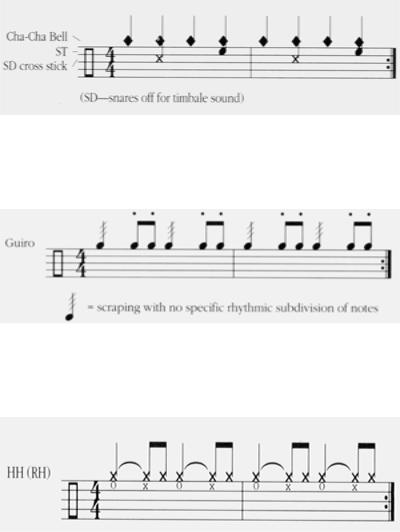
41
Cha-cha bell
The cha-cha-cha was a dance created by the charanga orchestras in Cuba in the early 1950's. Charanga orchestras were groups which played for the upper classes in Cuba, using piano, violins, flute, upright bass and timbales. These orchestras played European dance music and refines styles of Cuban dance music. The sound was less rhythmic than son music, which was more syncopated due to the influence of African rhythms. Congas were added later to charanga orchestras. Son orchestras also played the cha-cha feel using congas. Let's listen to the basic cha-cha feel. It is a straight quarter-note feel which is not played to clave. This is why it doesn't swing like the cascara or mambo bell patterns, which are syncopated and played to clave. You may sometimes see clave played to a cha-cha feel. It may be played by a singer who is used to playing clave on other dance feels, but this is not traditionally done. Remember, the cha-cha pattern doesn't fall on either side of the clave.
The instrument that you hear will be conga playing tumbao, cha-cha bell and small tom playing the timbale part, and guiro. Basic cha-cha feel:
Here is the guiro rhythm usually played for cha-cha:
Hi-hat playing the guiro:
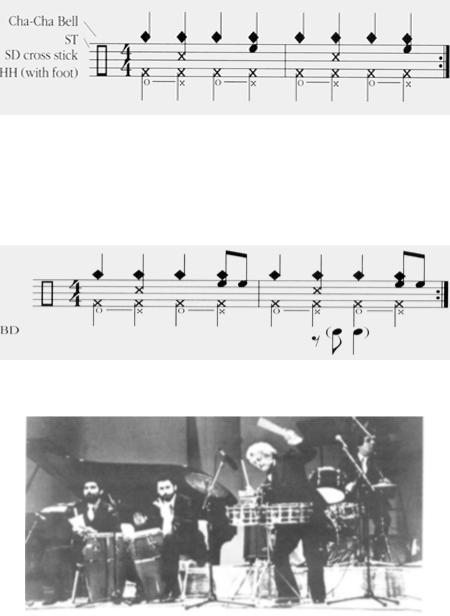
42
This rhythm can be played on the hi-hat with either hand or the foot at slower tempos. You can play the basic cha-cha bell pattern with the right hand and the hi-hat guiro part with the left hand. Another possibility is reversing the hands, playing the cha-cha bell with the left hand and the right hand playing the hi-hat. In the next example, the hi-hat is playing part of the guiro rhythm with the foot. Notice that the eight-notes after beats 2 and 4 are not played.
Let's listen to the cha-cha feel played on drumset with a conga player:
The cha-cha bell pattern can be played on ride cymbal for more of a jazz feel. The ride cymbal figure can be played as straight quarter-notes or eight-notes accenting the downbeats. Cha-cha feel without a conga player:
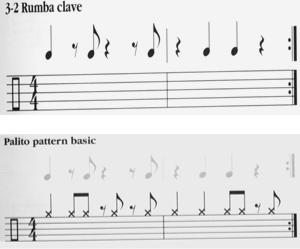
43
CHAPTER 5
RUMBA
Guaguanco:
Rumba is a form of folkloric drumming, singing and dancing which uses African rhythms, mostly Spanish vocal refrains, and African dance improvisations. The three most popular forms of rumba are guaguanco, yambu and columbia.
Rumba columbia is played with a 6/8 feel and sung in a combination of Spanish and African phrases. Rumba yambu is traditionally played on different sized boxes which have been hollowed out( called cajones), and is sung in Spanish. Rumba guaguanco is the most popular rumba, especially in Puerto Rico and New York City. Guaguanco is played by a group that consists of three drummers, using congas of different sizes and tones. The three drums used are the quinto( the solo drum), Salidor (the timekeeper) and tres golpes(the accompaniment).
Quinto is the name of the high drum which solos over the rhythm and vocal vamps. Traditionally, the quinto is played to accompany dancers. The vocals are often improvised commentaries on people, the news, etc. The traditional instruments for guaguanco include clave, palito and congas. Rumba clave is usually played for guaguanco. Let's listen to an example of guaguanco played with clave, palito pattern, two congas and quinto drum. You will hear everything together, then each part separately so that you can see how it all fits together.
Guaguanco, folkloric feel at slow tempo:
Guaguanco, folkloric feel at faster tempo:
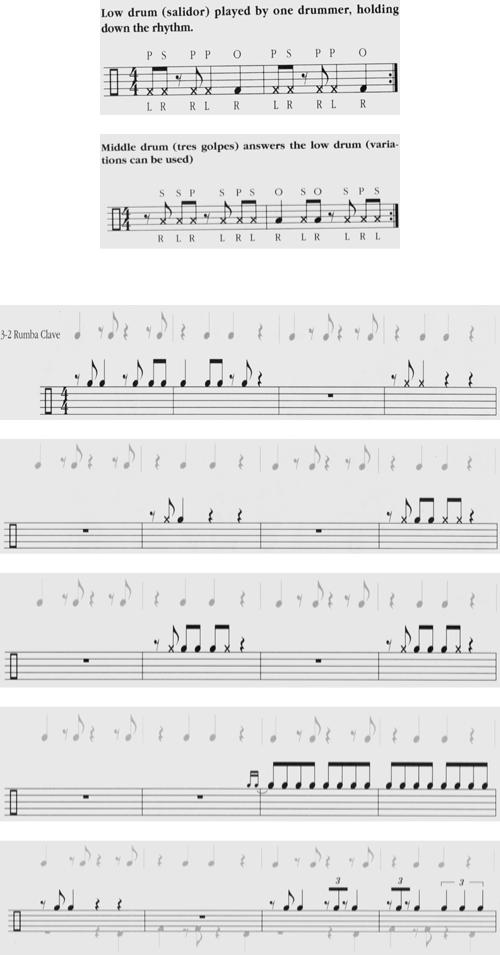
44
The quinto drum solos over the rhythm. Here is the quinto solo written out:
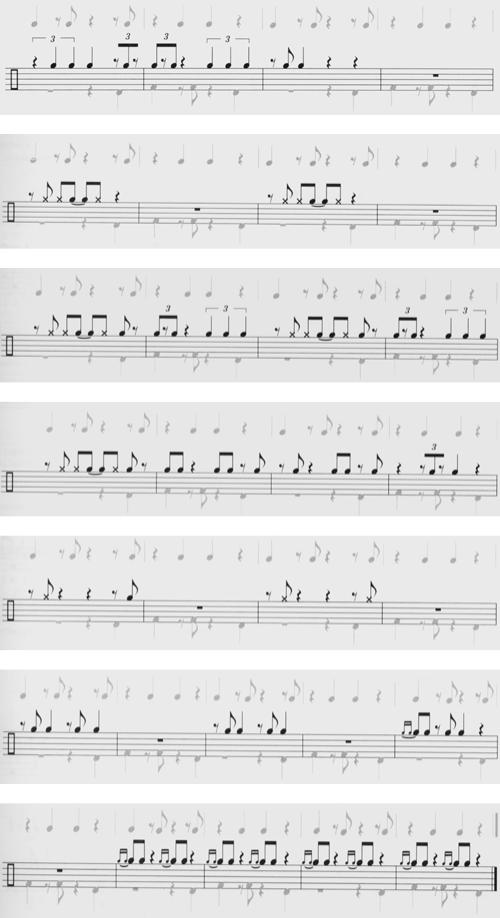
45
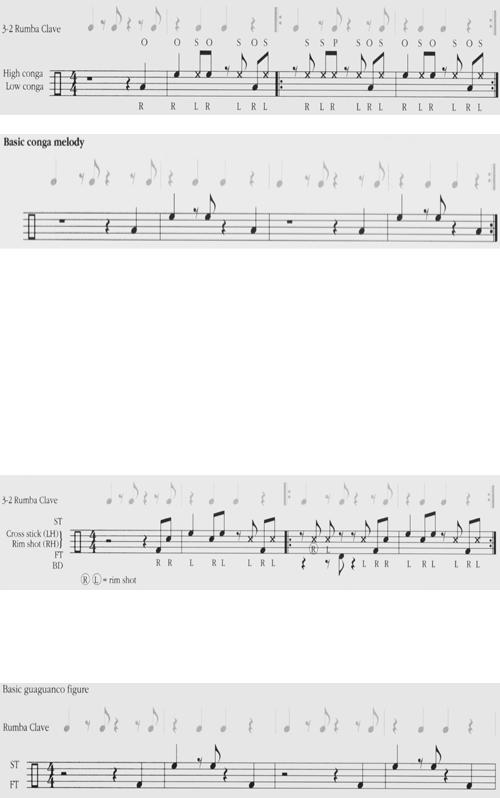
46
Guaguanco on congas
Here's the guaguanco figure which we just heard with two players, played by one conga player, as it would be in non-folkloric situations.
Guaguanco on drumset
Let's adapt this to the drumset. We can play the floor tom and small tom imitating the conga melody, or substitute other toms depending on the tuning of your drums. The figures played around the basic guaguanco pattern are adaptations of the conga parts.
Guaguanco figure on drums:
The guaguanco figure we've been using is the most popular and well-known guaguanco figure. There are many other possibilities and variations. Basic guaguanco figure:
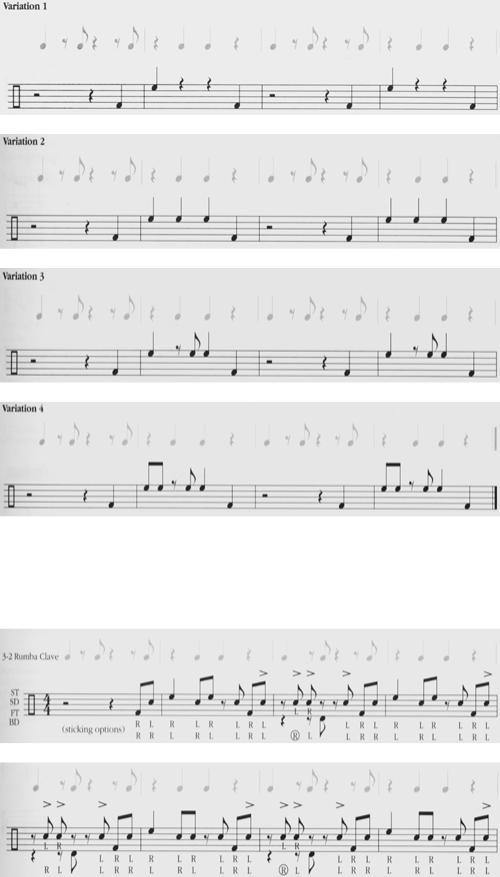
47
Variations 1-4 with all parts written in, notice how the accented snare drum notes answer the guaguanco figure:
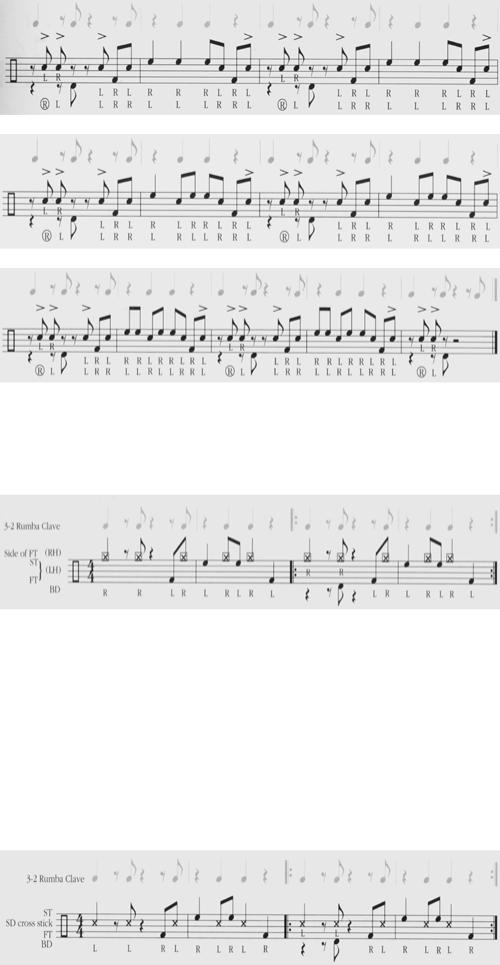
48
Try playing clave with the right hand on the side of the floor tom while playing the basic guaguanco figure on the toms with the left hand:
You can try reversing the hands, playing clave with the left hand(snare drum across stick) and the guaguanco figure on the toms with the right hand. This will help you feel where the guaguanco figure falls on the clave. Notice that the active part of the clave(the high tom part) falls on the 2-part of the clave. This is called playing against the clave because the figure doesn't synchronize with the clave, but seems to go against it. One of the hardest parts of learning guaguanco is learning to feel it against the clave. This takes time so don't get discouraged. After plenty of listening and practicing this won't feel or sound so strange. The next example is the same as the last one but with reversed hands:
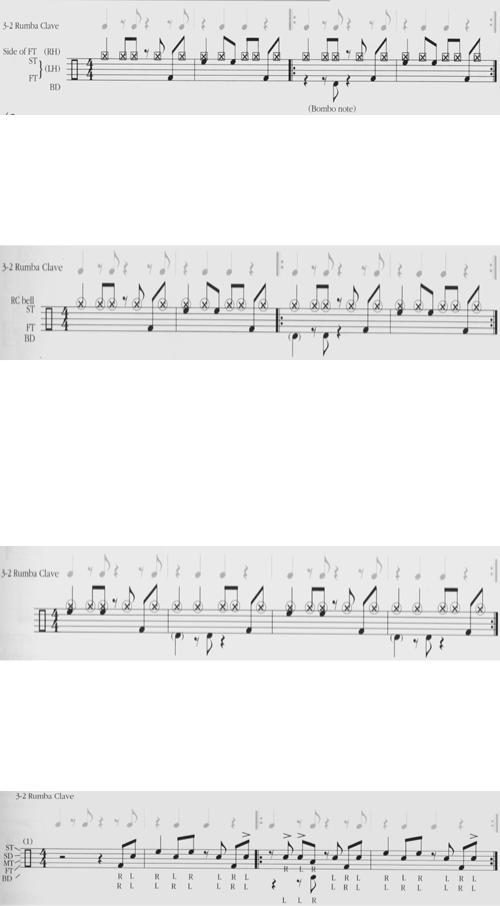
49
Now let's play the palito pattern on the side of the floor tom and the guaguanco figure on toms:
The palito pattern can be played on the bell of the ride cymbal for a different texture while the bass drum answers the guaguanco figure played on the toms. This can be used in jazz and fusion settings, here:
You can try leaving out beat 1 in the bass drum part and just play the bombo note, making the rhythm more syncopated. The bombo note is an important accent played in the conga part, so be sure to accent it on the bass drum. When playing guaguanco with a conga player, the conga player will play the guaguanco figure against the clave and the drumset player can answer, playing the figure with the clave, here:
In the guaguanco rhythm, the bombo note is set up by playing different figures. These figures are usually played on the solo(quinto drum). We'll play them with accents on the snare drum:
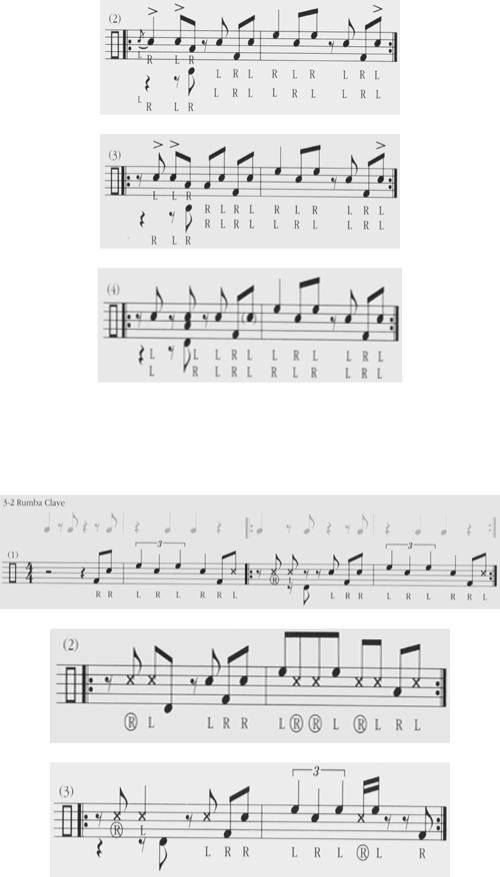
50
Different variations that can be played on drumset, for guaguanco. Here and here.
